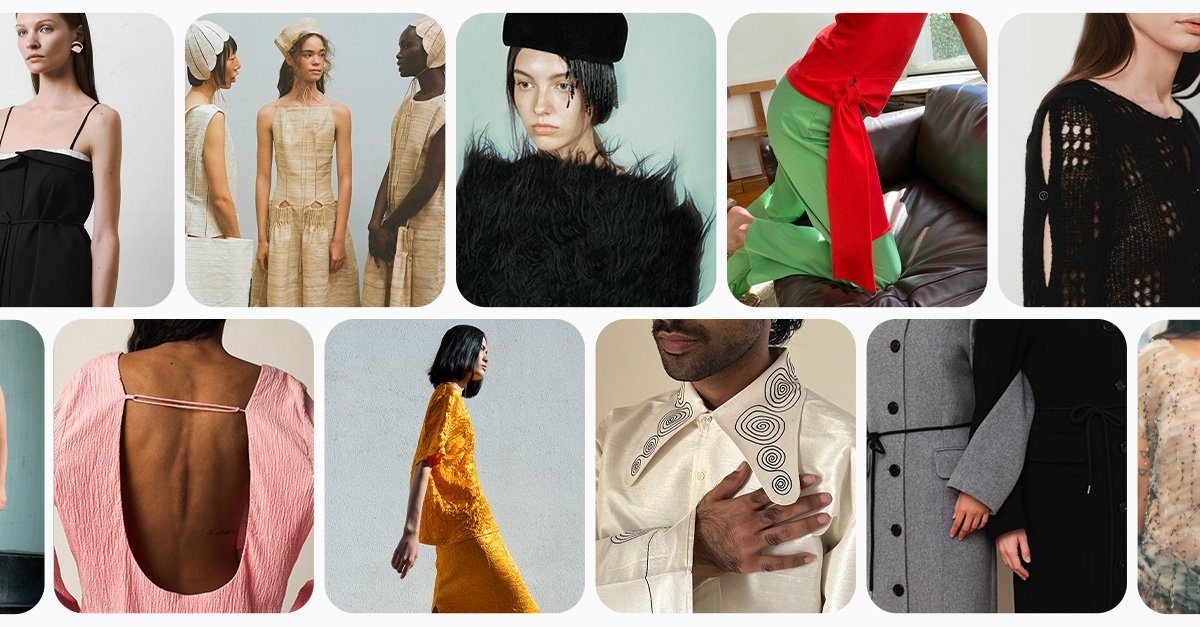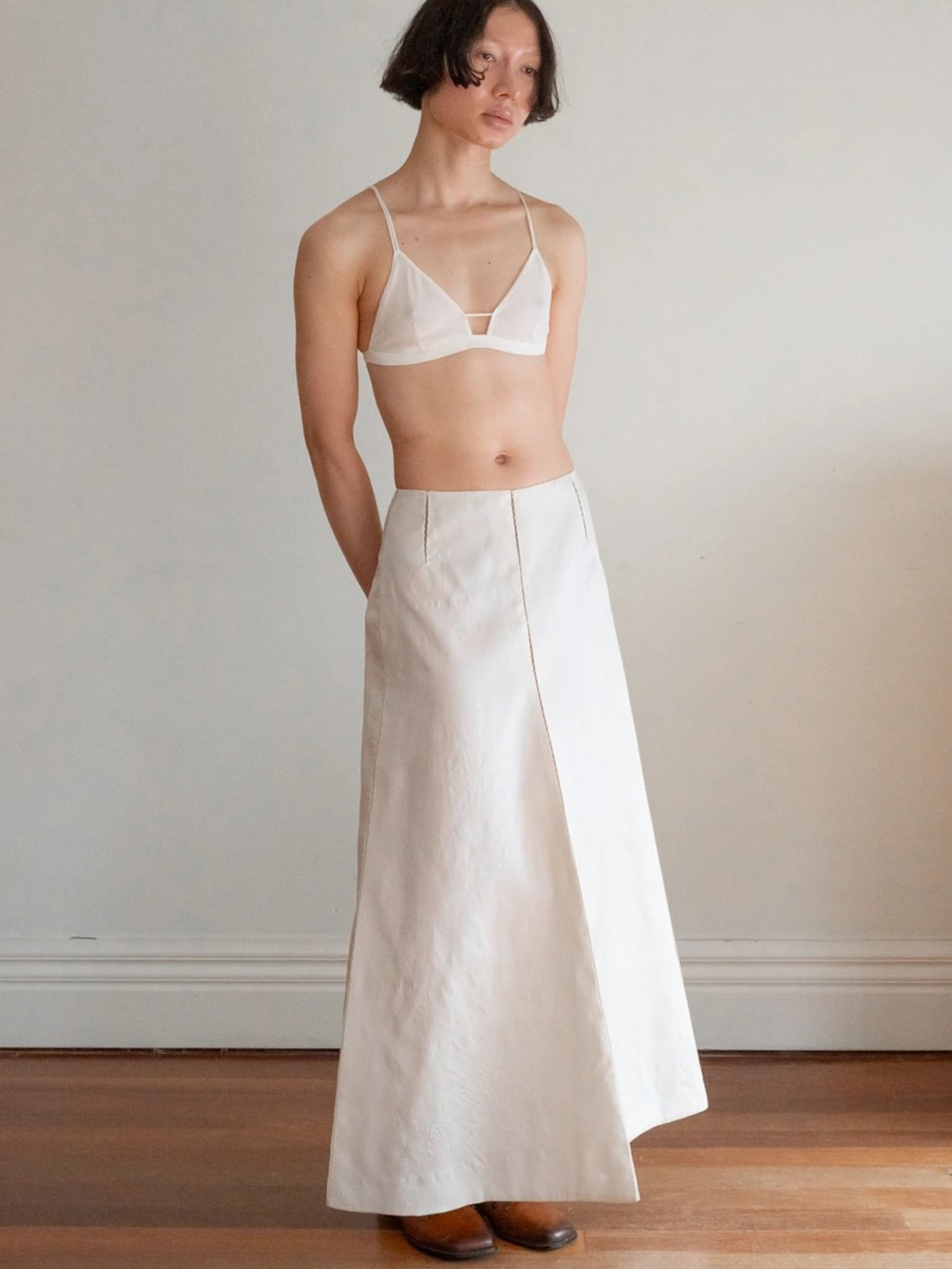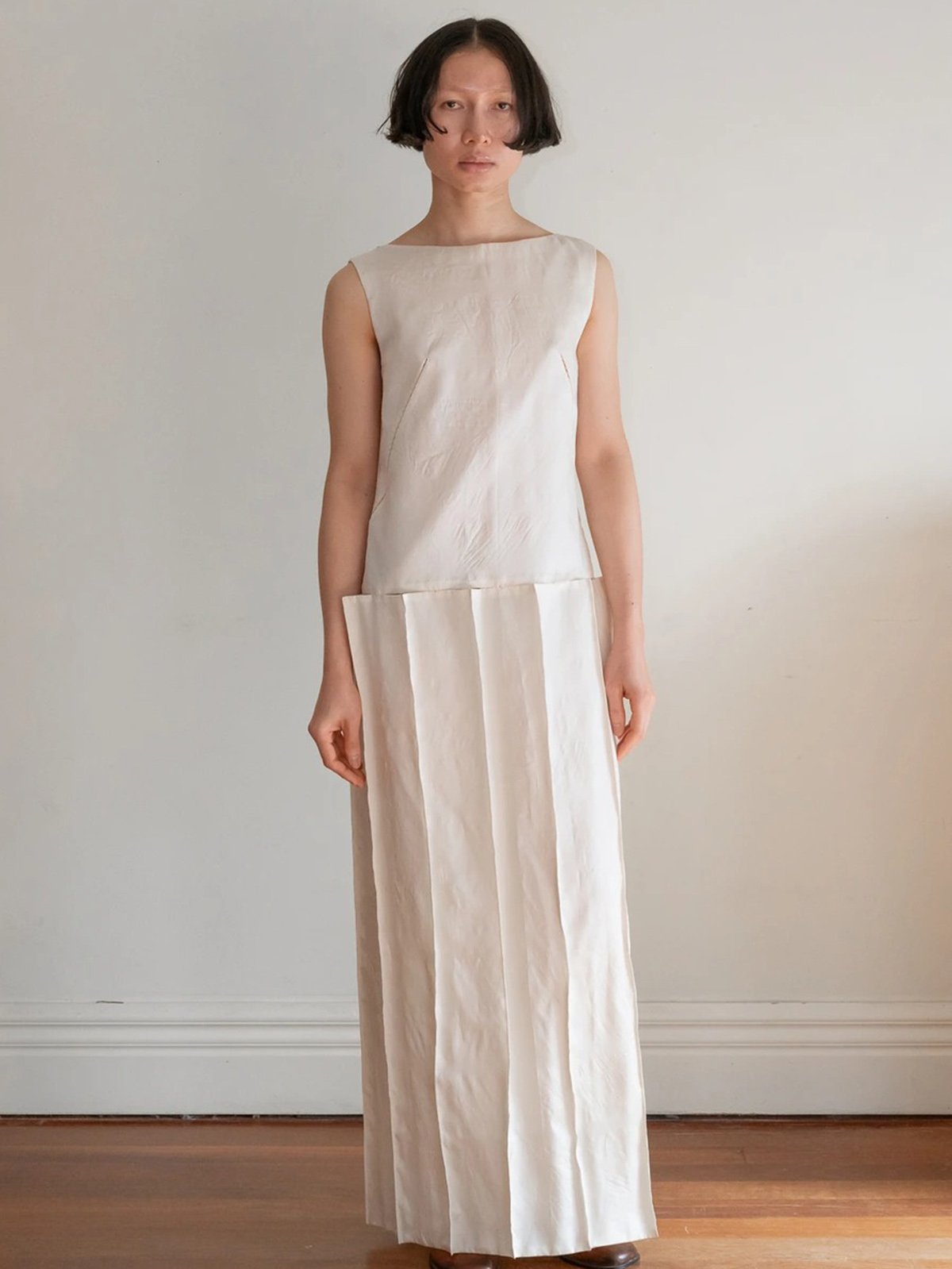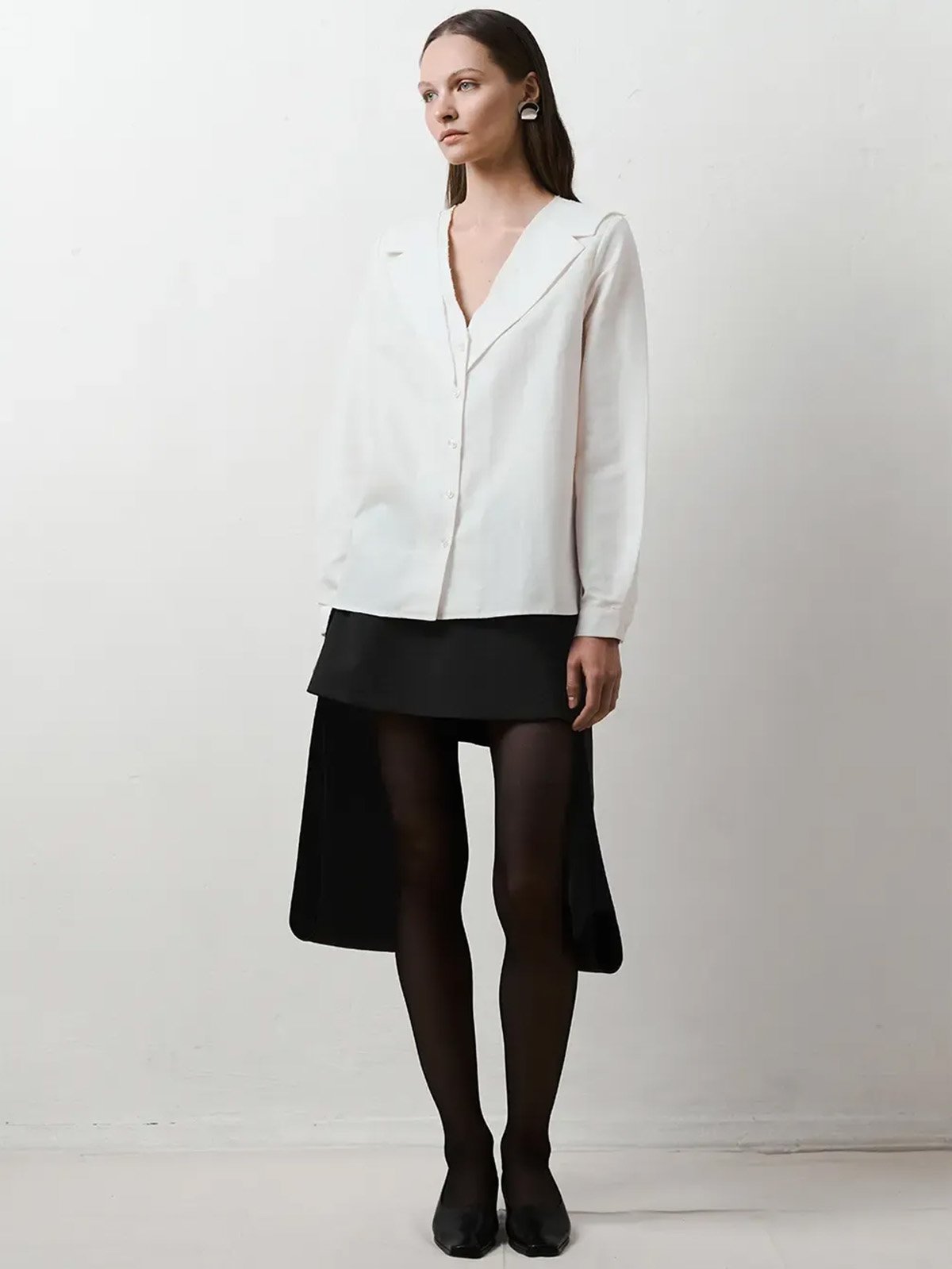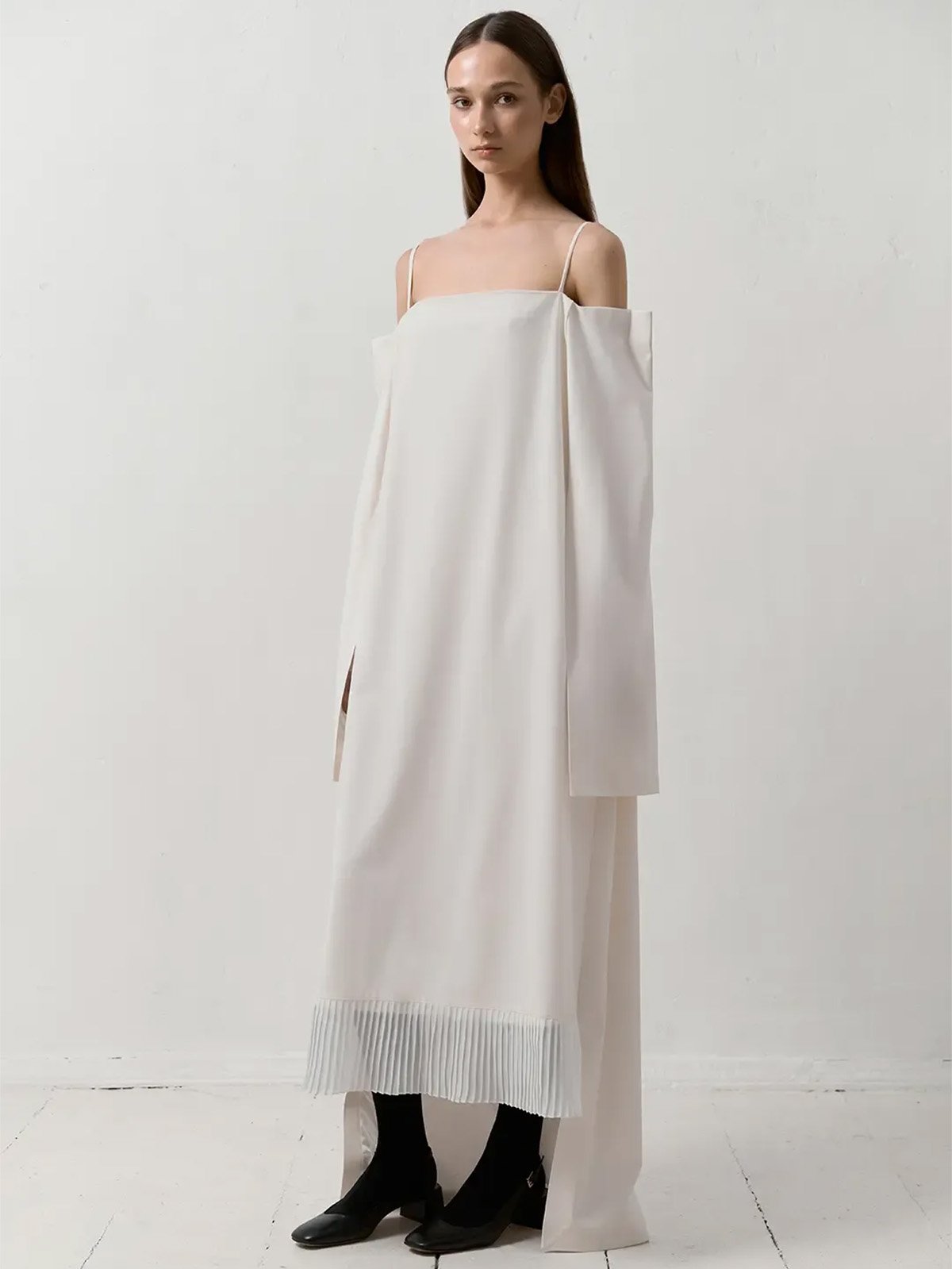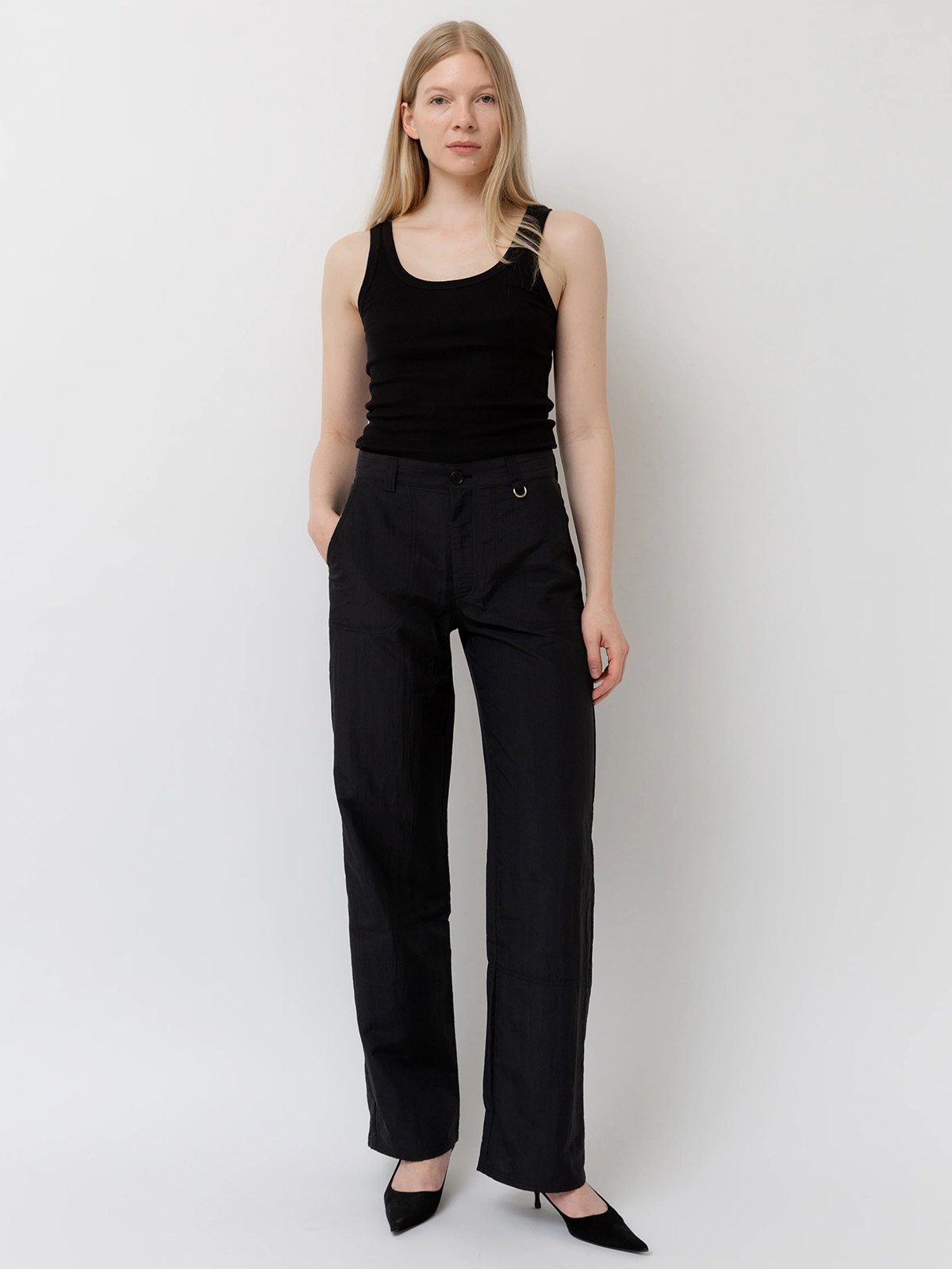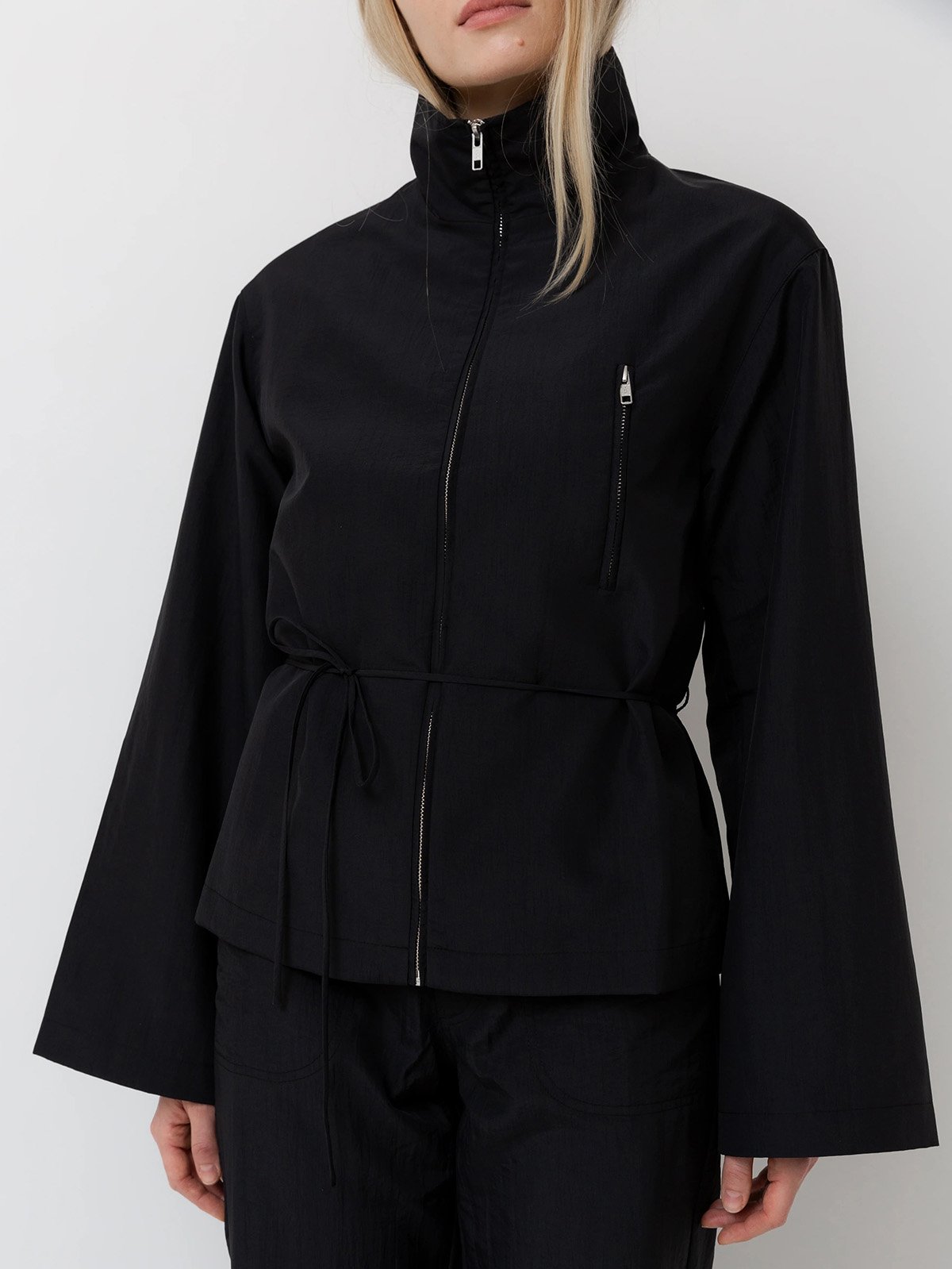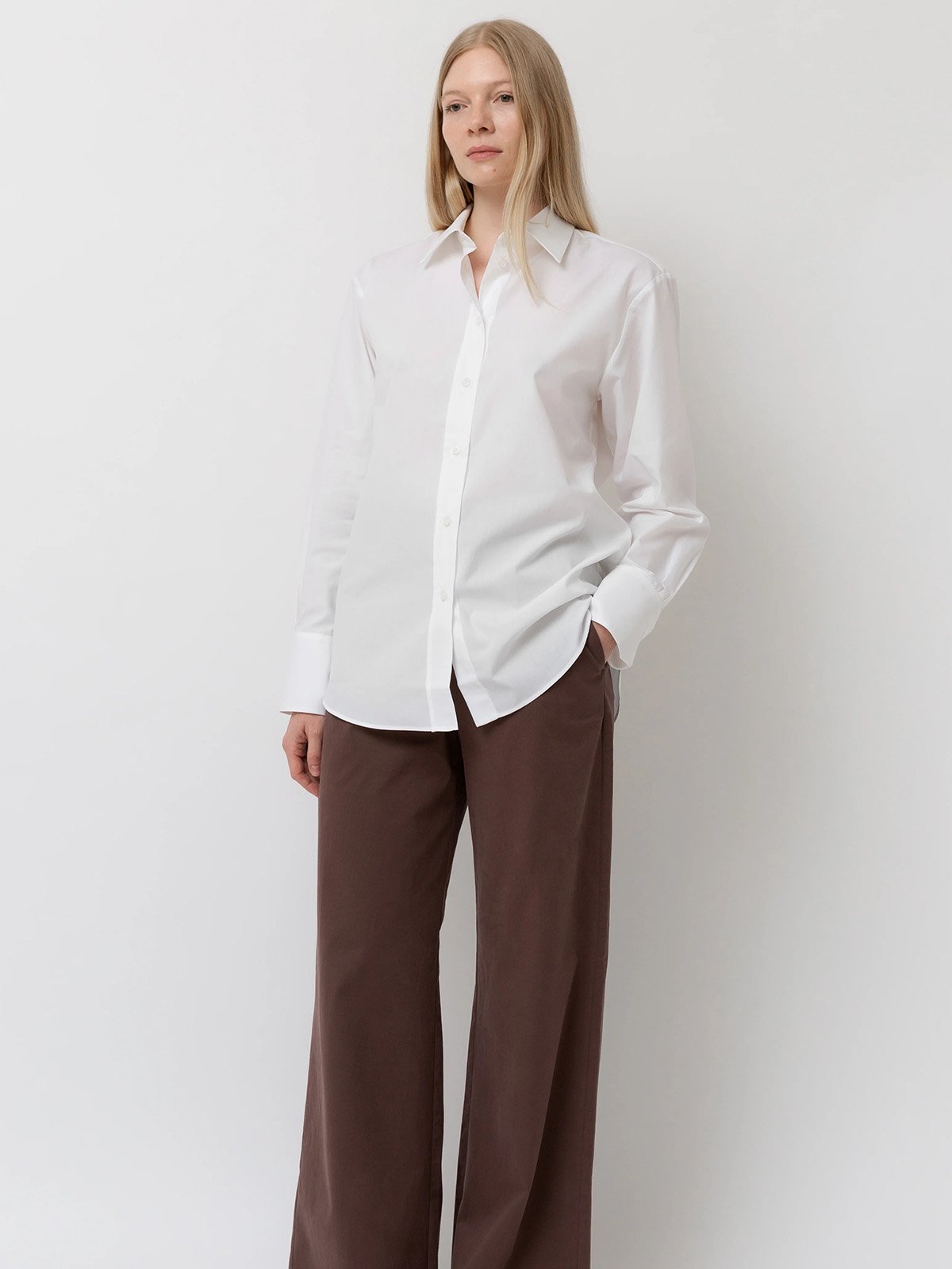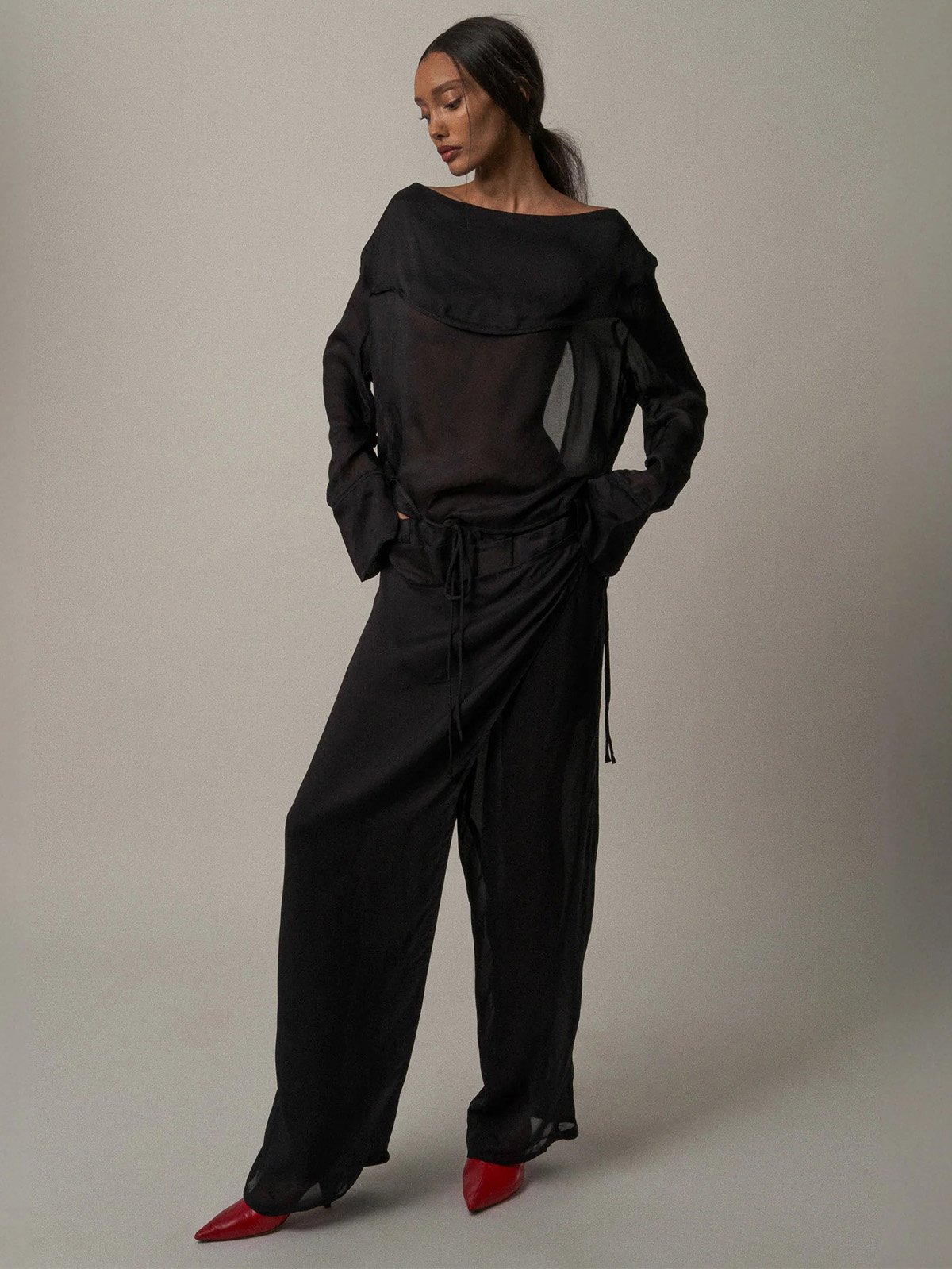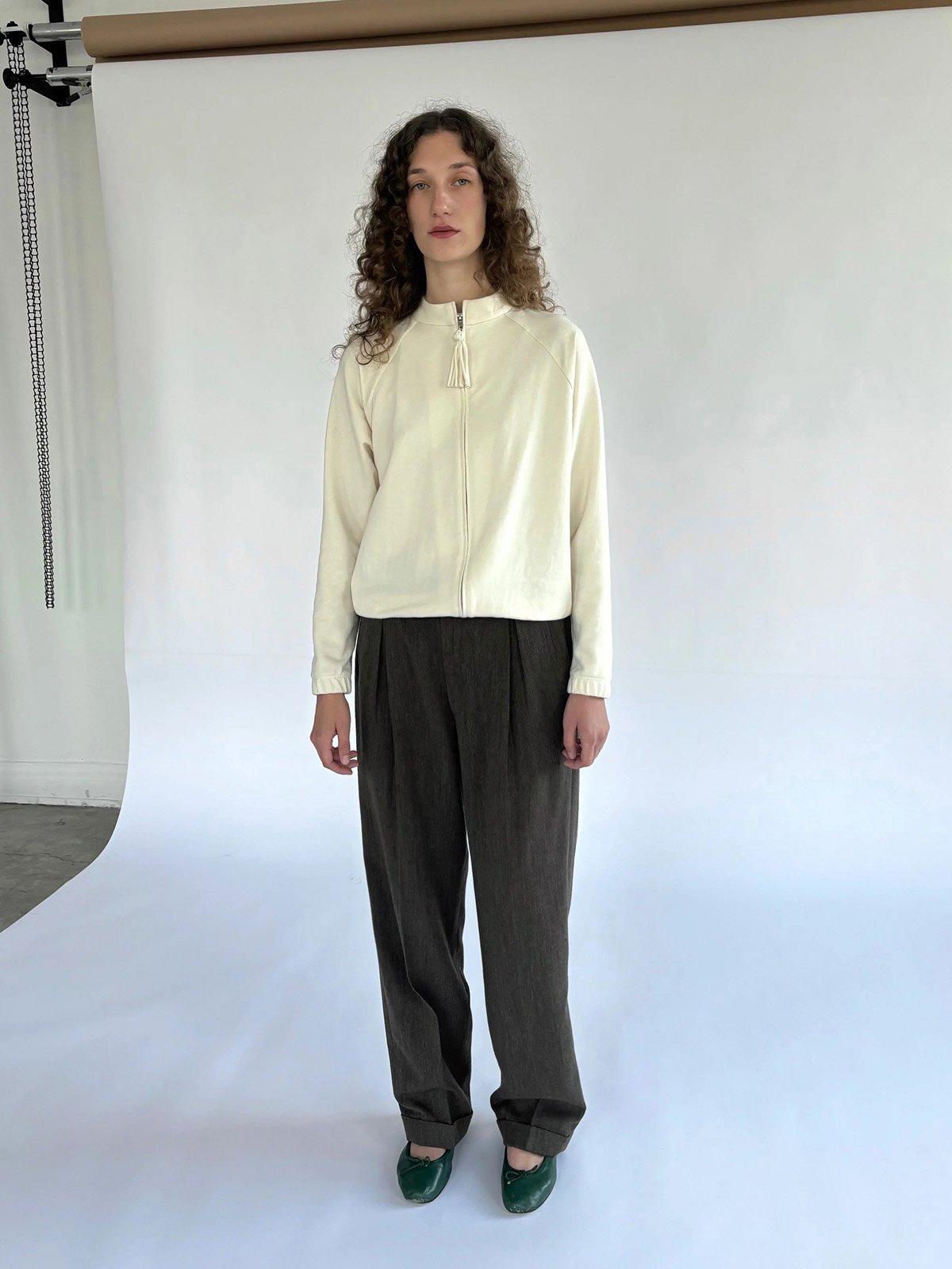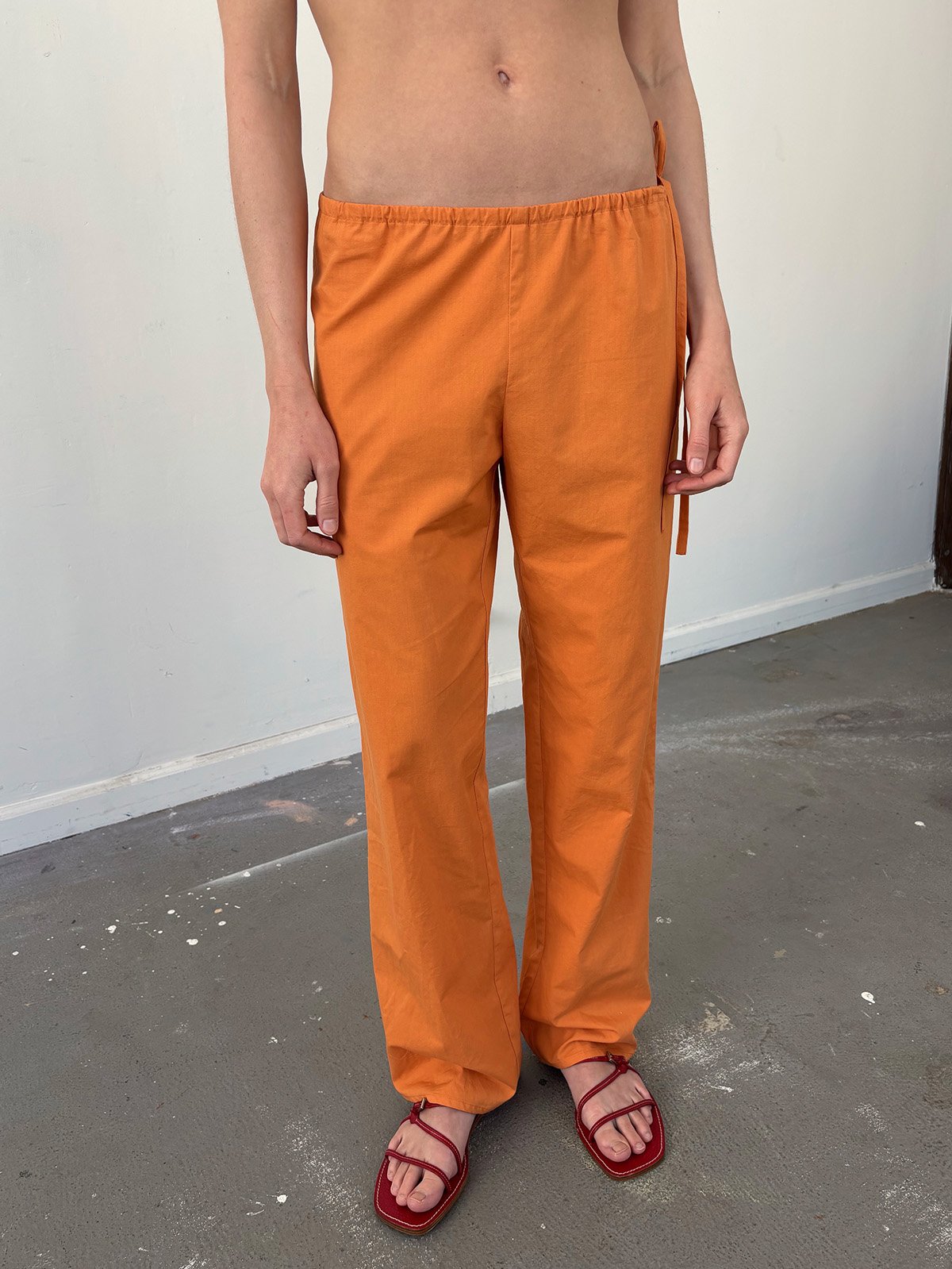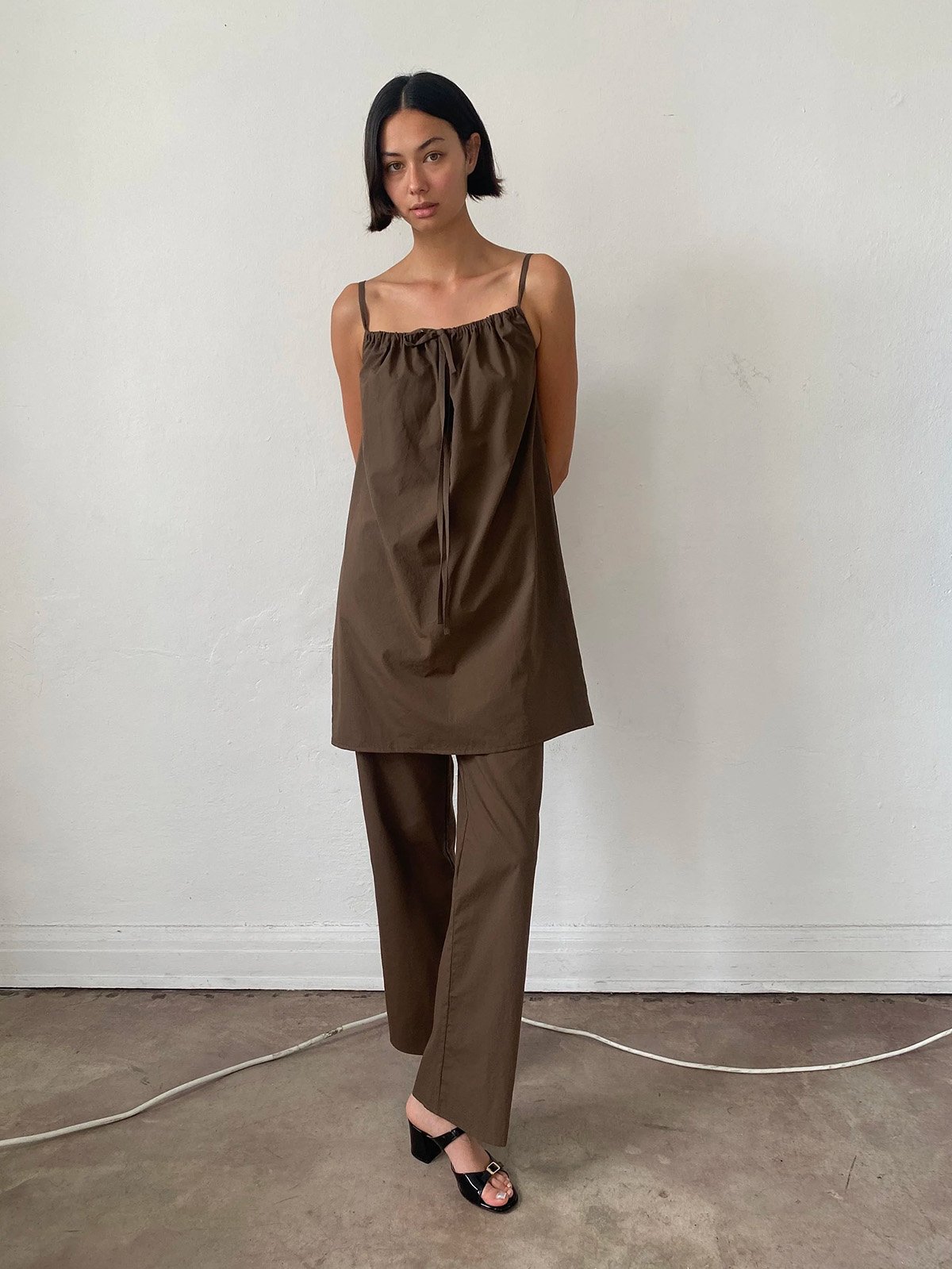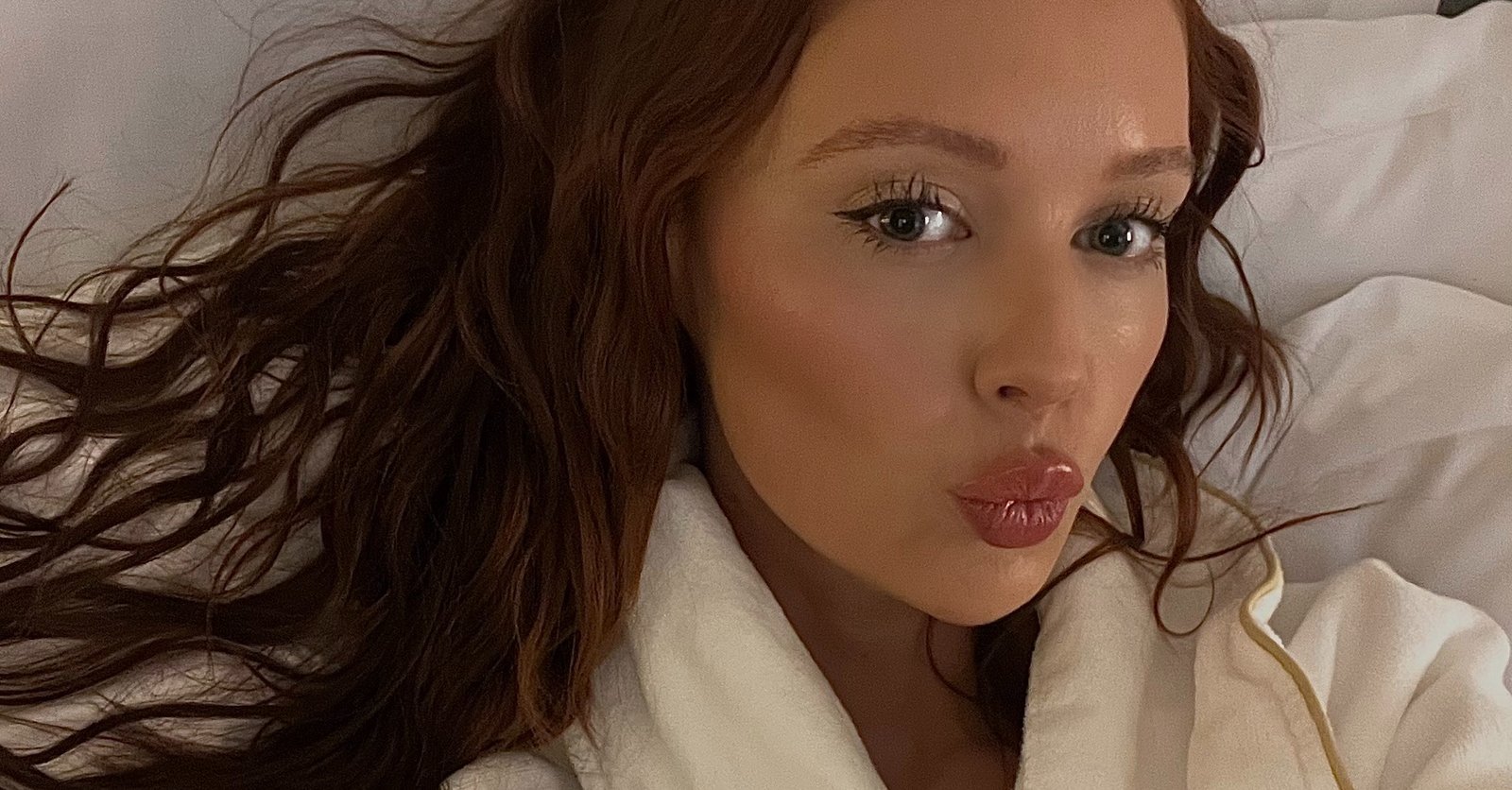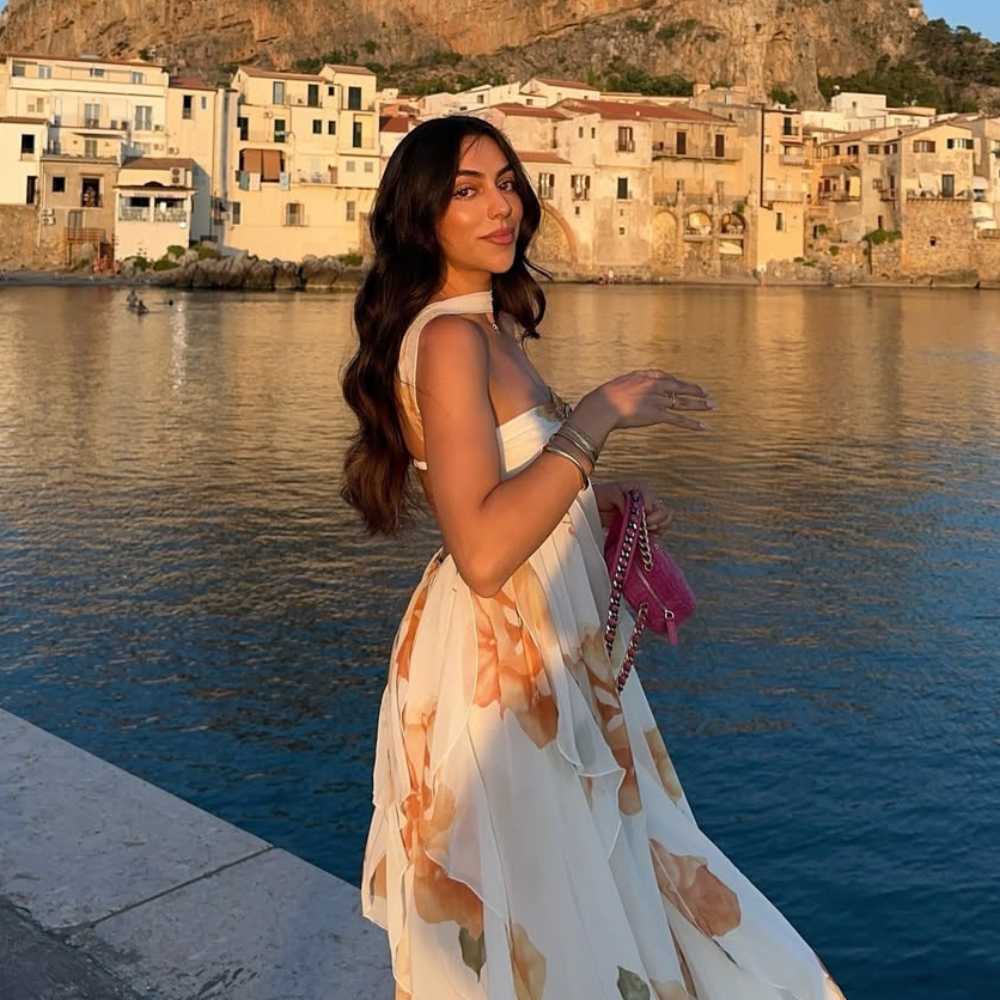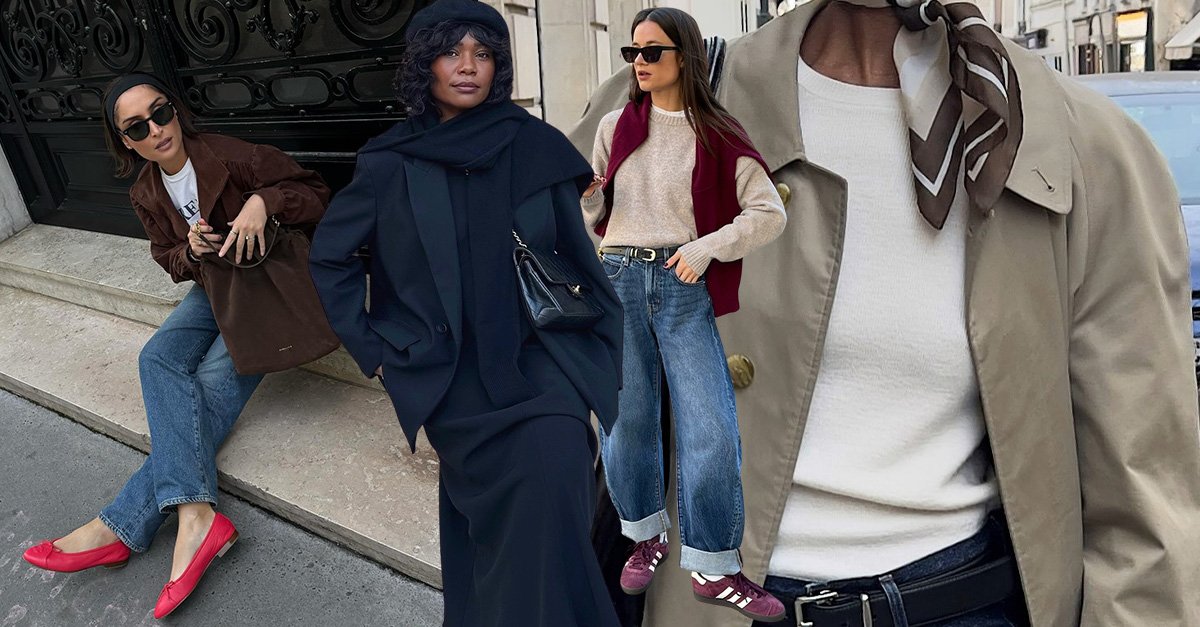There is hardly a shortage of brands for interested fashion people to choose from in 2025. All around the world, designers are venturing out on their own, taking what they’ve learned from professional mentors, assistant jobs, design-school professors, family members, and hours of practice and making a name for themselves in the ever-competitive fashion landscape. As editors specializing in the industry, it’s our job to find them and then share their stories with as many people (and future customers) as possible. Fashion is all about word of mouth, so when a new brand arrives on the scene, whether they’re local to us or hail from far-off cities, we’re going to talk about it.
If you, too, enjoy the hunt and are always searching for fresh fashion perspectives to learn about and unique pieces to add to your wardrobe, you’ve come to the right place. Welcome to Fashion’s New Guard, Who What Wear’s annual report on the newest, coolest brands from across the globe. This year, we have designers from Monterrey, Mexico; Porto Alegre, Brazil; and Chișinău, Moldova. Others are based in London, Los Angeles, and Copenhagen. Each has their own story that’s told through the clothes they spend their lives crafting, and as always, we’re telling them. Below, meet the latest additions to fashion’s new guard, from Esånt to Zn Ali.
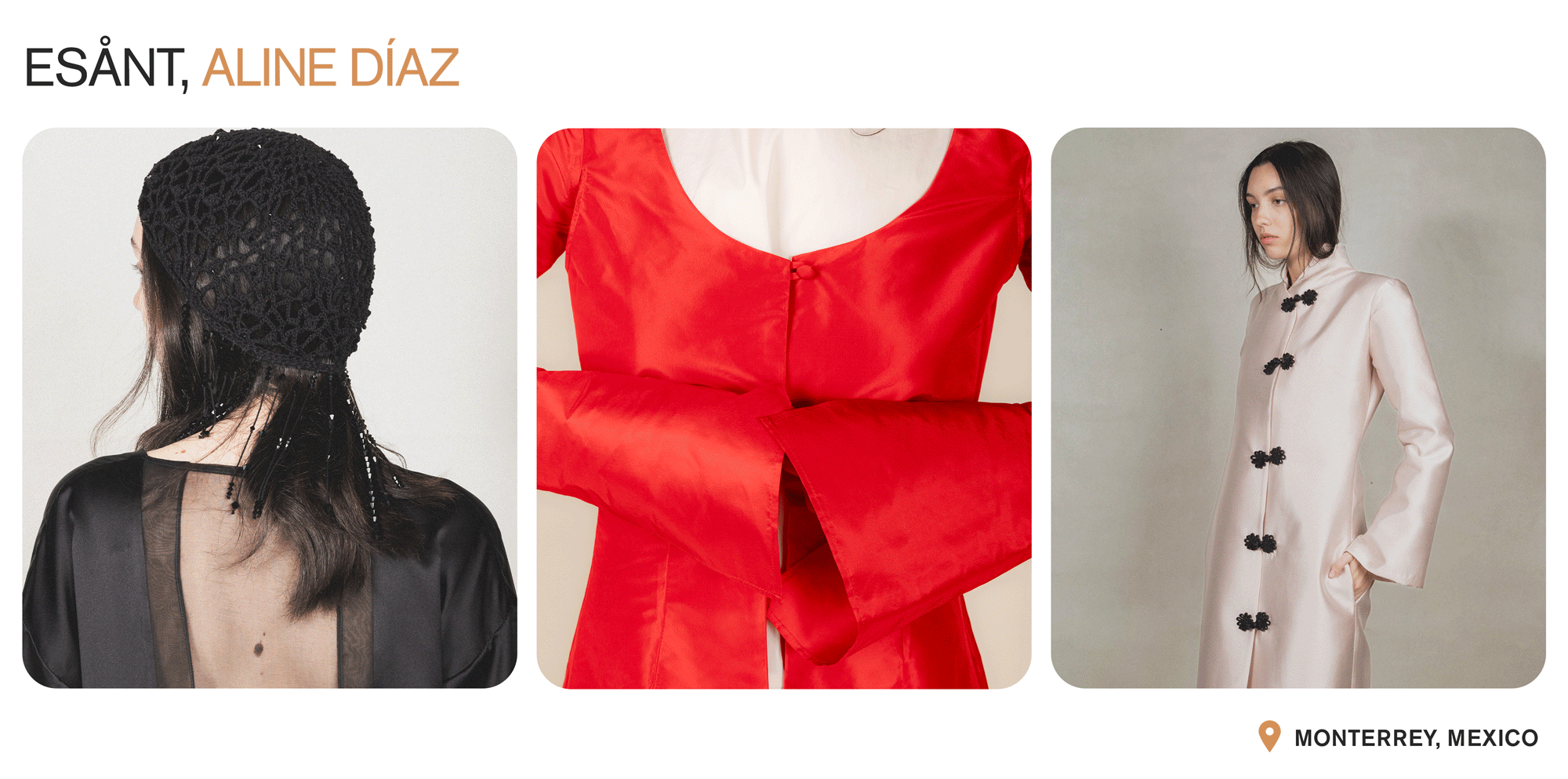
(Image credit: Esånt)
Aline Díaz has always had a deep fascination with garments. It started when she was young. “I loved to play with dolls and Barbies just to dress them,” she tells Who What Wear. The designer—who founded her ready-to-wear brand Esånt six years ago in Monterrey, the capital of the Nuevo León state in northeast Mexico—found a sense of creative freedom in designing. It allowed her to play with different elements and create unique and beautiful things for women. “The ability to transform a simple piece of fabric into a work of art is both exhilarating and rewarding,” she explains. “That process showed me that fashion is not just about clothing; it’s about telling a story and making a statement.”
Díaz sees fashion as a language of sorts, one without any words. It gives people a mode to express themselves non-verbally and show off their personalities and values without having to say anything at all. “The brand is rooted in the belief that clothing can serve as a powerful mirror for identity, allowing women to move through the world with intention, beauty, and strength,” Esånt states on its website. The women who wear Díaz’s designs have and always will be her muses. “I found my inspiration in contemporary women and their physical expressions,” she says. “The grace and movement of these remarkable women played a pivotal role in shaping my vision.” She wanted to create a uniform for them—a second skin that changes and adapts as they move through life, maturing and gaining a clearer understanding of their desires. “Here, change is constant, and each silhouette is a response to the fluid nature of self,” the site states.
In recent years, Díaz has become especially aware of the environmental impact of the fashion industry, which is why her brand has adapted its practices. “I am committed to creating designs that are not only beautiful but also environmentally friendly and ethically produced,” she says. It was important that her pieces send a responsible message and that wearers can feel positive and secure about the origins of their clothes.
Since starting her brand in 2018, Díaz has dressed some of today’s most relevant tastemakers, including Christie Tyler, Mimi Nguyen, Stephanie Broek, and Leandra Medine Cohen.
How would you describe the Esånt world?
Beautiful, simple, powerful, empowering, authentic, and meaningful.
How does Monterrey inspire you and your designs?
The everyday experiences woven into a woman’s daily routine and the remarkable women in the community, each with their exceptional taste and cherished family lives, have profoundly deepened my understanding of the enchanting world of contemporary women.
Where do you go in Monterrey when inspiration runs dry?
Home, nature, and meditation.
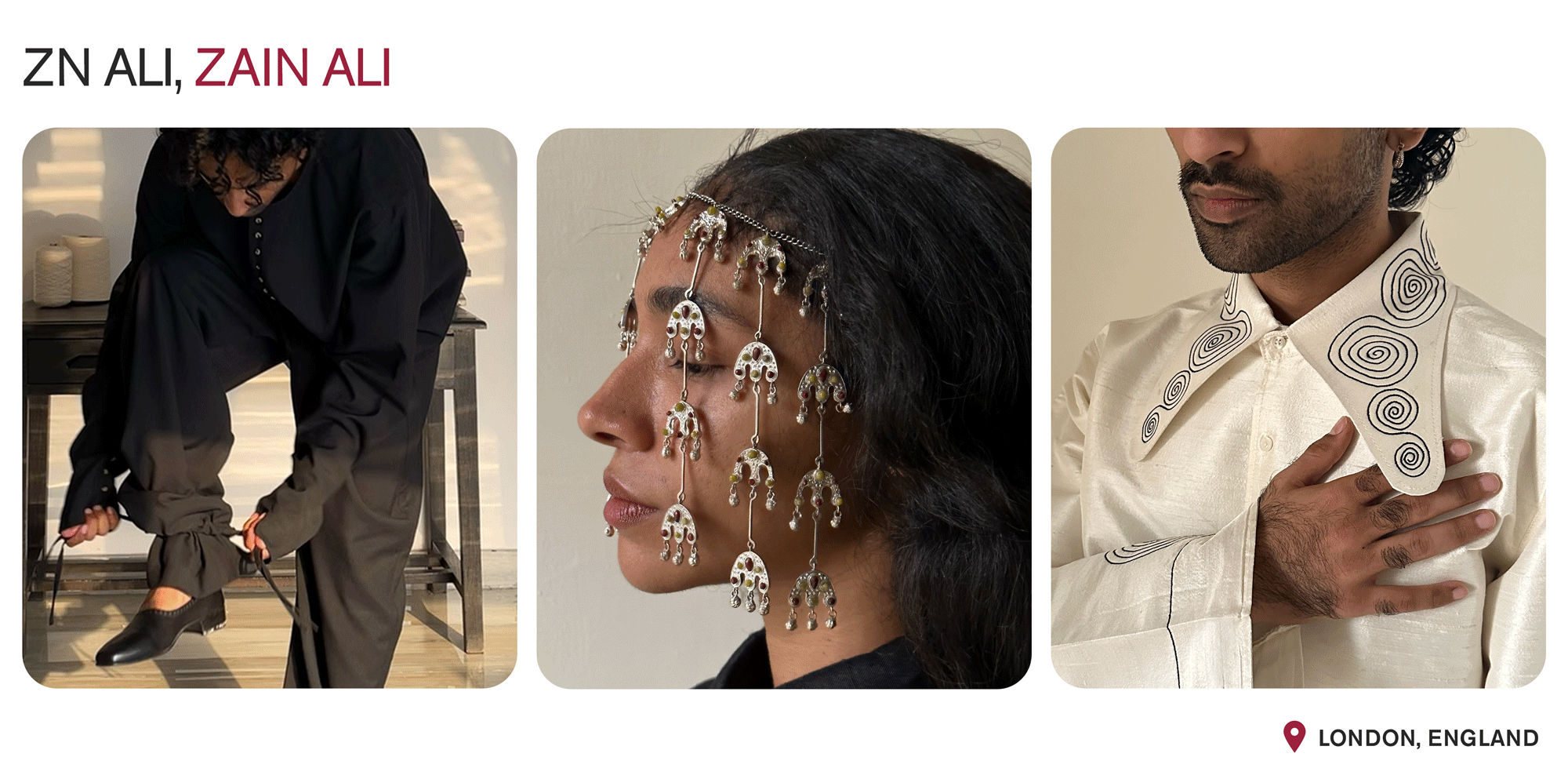
(Image credit: Zn Ali)
Pakistani designer Zain Ali always envisioned himself doing something with textiles when he grew up, but it took a special family project for the title of “designer” to be added to his résumé. According to the designer, who moved to the United Kingdom from Pakistan at the age of 5, his ready-to-wear label Zn Ali got its start in 2021 during the COVID-19 pandemic when he set out to re-create the shawl his mother wore at her wedding. “She had lost [it] through all the moving around we [did] as a family,” he tells Who What Wear. “I had to find ways to revive the exact colors, textiles, materials, and embroidery we saw in photos.” The process of researching and designing the meaningful heirloom inspired him. “It planted a seed in me to keep going until [the brand] became what it is today,” he says. Zn Ali is an archive—a collection of re-created pieces from Ali’s family history.
For the London-based creative, having a perspective is the most important puzzle piece when building a brand. It should go beyond the clothes, he explains, and be a “golden thread that keeps you alive as you waver and grow as a designer.” He doesn’t follow rules and suggests that new designers should challenge themselves as researchers and storytellers. “Build your brand the way it works for you,” Ali recommends. “This industry is constantly evolving and is in dire need of new systems.” While Zn Ali has only been around for around four years now, its work is already playing a role in building a novel framework. His pieces have been featured in T Magazine, Vogue, and Dazed and worn by Riz Ahmed on the cover of British GQ as well as other occasions. He dresses artists, musicians, and dancers—creatives of all kinds who are shaping culture in real time.
How would you describe the Zn Ali world?
Personal, intimate, and playful.
How does London inspire you and your designs?
Whilst London is the base that I always return to and the city that raised me, I am fortunate to call so many cities home today. Nothing inspires me more than my beautiful friends and family, the lives that they live, and how I imagine they would look in the designs that I create.
Where do you go in London when inspiration runs dry?
My imagination is expansive, and sometimes, it can feel overwhelming to try and do everything all at once, but I often turn to space and interiors, whether it’s a heritage building, someone’s home, or a gallery. Translating the textures and combination of colors within a space helps me think of the most fun ideas for my designs.
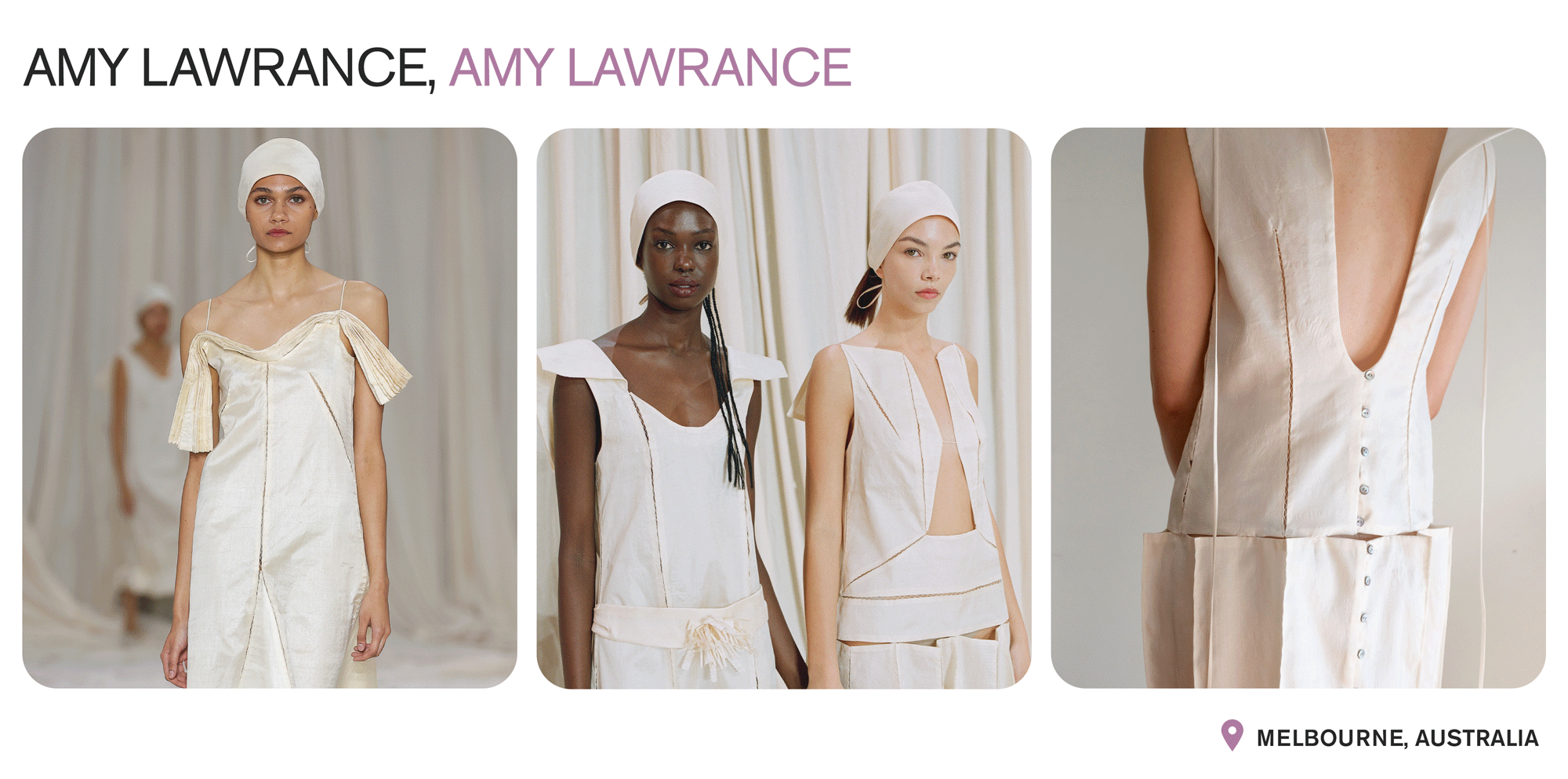
(Image credit: Amy Lawrance)
A pure and genuine love of dressmaking is the primary driving force behind Amy Lawrance’s namesake brand, which is based in Melbourne, Australia. The designer established the ready-to-wear brand in 2023 after years of studying and working for prominent Australian fashion labels, but her interest in design and clothing creation started long before that. “I was constantly making things as a kid,” she tells Who What Wear. By the time she was 11 or 12, she was completely enamored by the practice. “I had none of the technical know-how, but I was determined to make things to wear,” she says. Instead, she would haphazardly sew things together with her mom’s “really old and clunky” sewing machine. Years later, her skill set has changed immensely, but her childlike fascination with design has remained the same—unbridled and limitless.
This passion for dressmaking is what led her to seek out formal training and industry experience. “Everything that I design and produce is driven by a reverence for the craftsmanship of dressmaking,” Lawrance says, so technical expertise was essential. Today, she makes every single piece in her home studio, with each design starting with a two-dimensional sketch. She then creates the pattern and sews everything together using a combination of machine and hand sewing. “All pattern pieces within a garment are individually lined, and all seams and darts are hand-sewn with a hand-fagoting stitch, creating a delicate two-millimeter sliver of negative space between each piece,” she says. For inspiration, she pores over hand-illustrated instruction diagrams in dressmaking manuals from the early 1900s. Her latest collection, shown during Australian Fashion Week 2025, stemming from paper-based dressmaking ephemera, like commercial paper patterns from the first half of the 20th century and home dressmaking manuals. The entire line was constructed out of raw silk tussah that Lawrance starched to give it a papery quality.
How would you describe the Amy Lawrance world?
I see my garments belonging to a time and a place that feels vaguely familiar but also slightly off-kilter. Part Victorian era, part mid-century, part science fiction.
How does Melbourne inspire you and your designs?
I run a lot and love to go for runs along the local trails in my area. The Merri Creek Trail and Main Yarra Trail are particular favorites of mine. I also love looking out the train window when I travel back to my hometown of Bendigo, which is a country town two hours away from Naarm. I love the sunburnt colors and textures that are so particular to Australia’s landscape, and I think this definitely comes through in a lot of my work.
Where do you go in your city when inspiration runs dry?
I love visiting Heide art gallery, which is a public art gallery and sculpture park set in parkland next to the Yarra River. It has five gallery spaces and the most beautiful architecture. I always feel really inspired after a visit there.
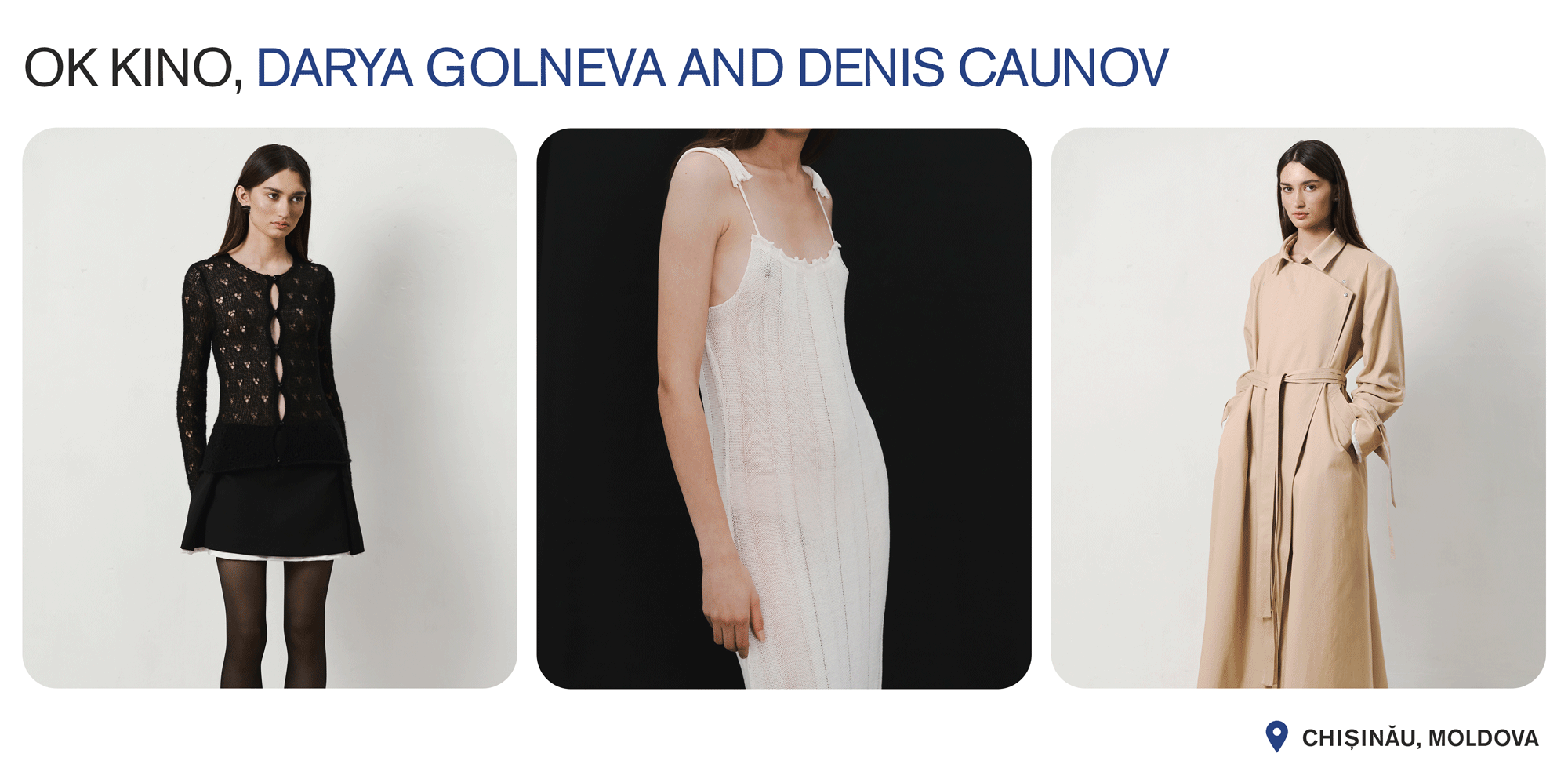
(Image credit: Ok Kino)
Born in 2023 at the intersection of fashion and architecture, Ok Kino is the brainchild of founders Darya Golneva and Denis Caunov. With Golneva’s background in fashion design and Caunov’s in architecture, the Moldova-based brand explores how we move through a space and how fashion shapes the way one presents oneself. “We approach clothing as a space for quiet transformation, rethinking familiar forms and introducing new functions,” Golneva tells Who What Wear. “We also look at how clothing can be worn and remembered.”
Ok Kino draws from the country’s cultural heritage. “We focus on overlooked, fragmentary details from daily life, using deconstruction and subtle interventions to reconsider how garments can be worn,” Golneva shares. The surrounding streets of Chișinău also play a part. “Our studio is located in a vivid, historic part of Chișinău, and the city constantly influences our work,” Golneva says. “I usually bike to the studio, crossing old 19th century villas, districts of Soviet modernism, and the vibrant area around the central market—all within a 15-minute ride. That shifting cityscape quietly feeds into everything we do.”
While culture plays a role in influencing Ok Kino’s minimalist, unique, and elegant designs, so does sustainability. “We care about an ethical attitude toward the environment and production,” Golneva shares. “We use deadstock fabrics, yarns, and upcycled materials sourced from Italian mills [and] selected for their texture and tactility.” Ok Kino also partners with a local community of female knitters, promoting an ethical slow-fashion model that pays respect to the people and the planet.
How would you describe the Ok Kino world?
It’s a world made of fragments—memories, folds, marks left by use. There’s a sense of stillness, of clothing that has already lived a little. We’re interested in garments that shift with the body, with time that can be worn and reworn in personal ways. Ok Kino’s world is quiet but full of intention.
How does Chișinău inspire you and your designs?
Chișinău is layered—beautiful in its contradictions. You can cross the whole city in under an hour and pass through grand villas, concrete housing blocks, and crowded markets. That mix shapes how we see things: imperfect but full of life. Even small details—a faded tile, a plastic bag tied just so—find their way into our work.
Where do you go in your city when inspiration runs dry?
In those moments, I like to take a quiet walk in the park near our home or meet a friend for coffee, especially early on a cool summer morning when the city is still half asleep. Sometimes, Denis and I get lost for hours in local secondhand shops, looking for one very particular piece. It’s less about finding something new and more about seeing something differently.
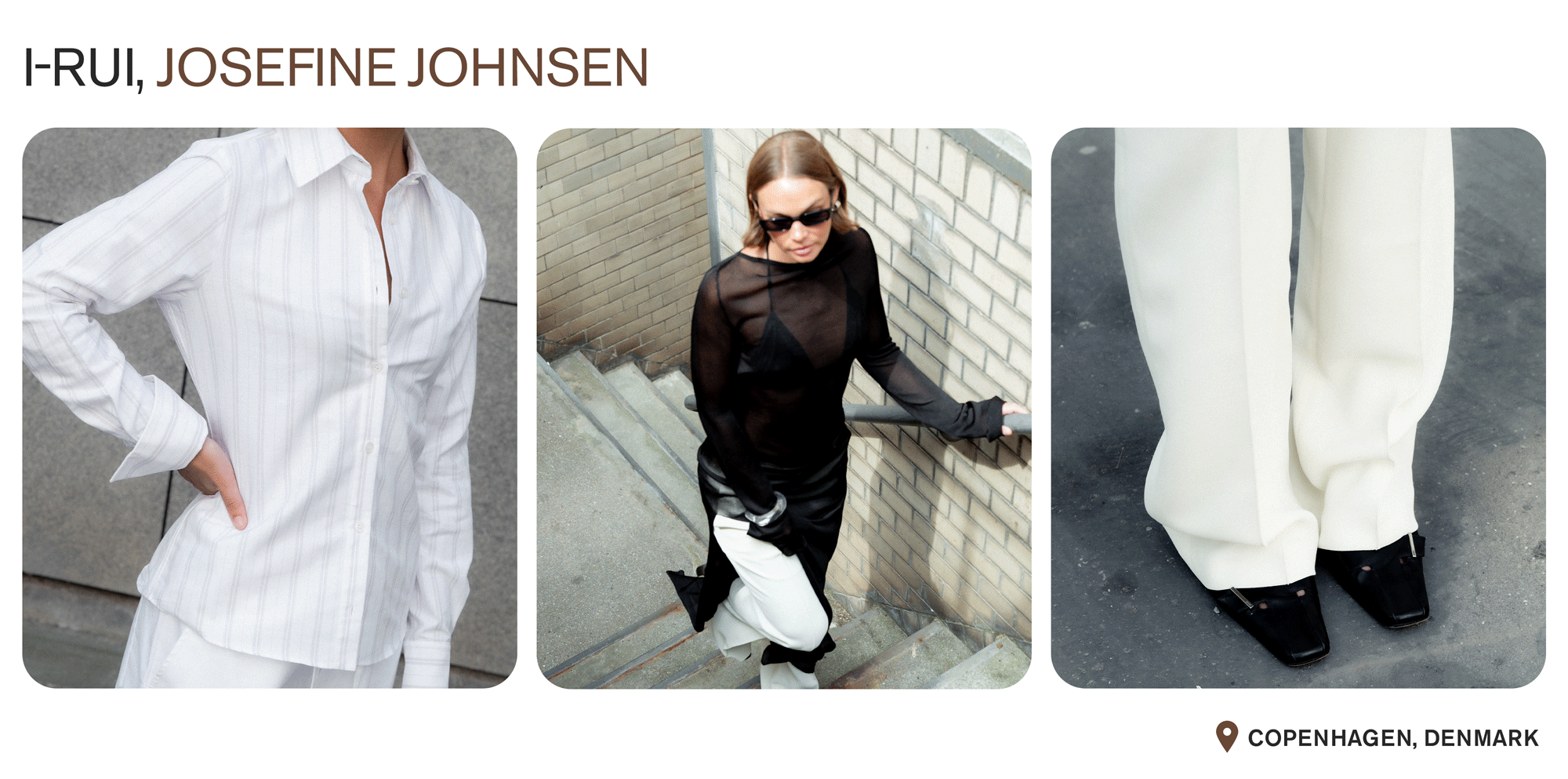
(Image credit: I-Rui)
From a young age, Josefine Johnsen had been drawn to creating. She vividly remembers spending hours in her parents’ basement reworking objects into something new. “I would sew dust bags, rearrange my room, and give things new meaning,” she tells Who What Wear. “It was never about the technique—it was about being able to express my emotions through creating.”
That creative drive eventually found a place in the worlds of PR and marketing, where Johnsen focused on fashion and interiors. “I loved working behind the scenes crafting visuals, building identities, shaping narratives, and creating the universe around a brand,” Johnsen shares. “However, I kept circling back to the idea of building my own entire universe rather than contributing to someone else’s.”
In 2024, that vision took shape with I-Rui, her Copenhagen-based ready-to-wear brand that focuses on more than just fashion. “I didn’t just want my label to be about making clothes,” she says. “I wanted to build a world around them—a universe where fashion, interiors, and culture meet and where the styling, the materials, and the settings all belong together.”
Before the first sketch was drawn, Johnsen spent countless hours building the I-Rui universe. “I made a brand book that laid out how it should feel, how it should move, what it should communicate,” she says. “I wanted everything to fit within a larger visual world that feels intentional and lived-in.”
When it came to the garments themselves, Johnsen focused on minimalist, modern pieces that were infused with quiet elegance and longevity. “Each silhouette is clean, feminine, and easy to wear,” she says. “Plus, they’re made from high-quality materials and built to stay in your wardrobe for years—not just a season.”
Johnsen shares that the journey has included its share of setbacks, but staying connected to her vision has kept her moving forward. “Failure and doubting yourself is part of the process,” she says. “What matters is staying consistent and remembering why I first started the brand.”
How would you describe the I-Rui world?
The I-Rui world is a refined and curated space where fashion, architecture, interiors, and culture connect. Minimalistic yet modern, I-Rui blends these elements into a focused universe of modern femininity. With a perspective shaped by design and visual storytelling, the brand creates more than just garments—it offers a considered experience.
The collections are built with longevity in mind. Pieces are clean, refined, and easy to wear but always with a detail that makes them feel sharp. It’s not about standing out. It’s about belonging to a world that feels considered.
How does Copenhagen inspire you and your designs?
Copenhagen is full of quiet contrasts. A crooked 17th century apartment can hold sculptural, modern furniture. A minimalist gallery might live inside a historic building. That mix of old and new, soft and structured is definitely something I am also inspired by when creating I-Rui.
Where do you go in your city when inspiration runs dry?
I live in the historic centre of Copenhagen, and when I need to pause, I walk by the canals or through the Royal Library Garden near my home. It’s quiet, and something about the stillness helps me reset.
But honestly, I find a lot of my inspiration in my apartment. It’s from the 1700s—crooked floors, old panels—styled with modern furniture, curated interior pieces, and personal objects that reflect how I see the world. It’s that mix of past and present, sharp and soft that I try to capture with I-Rui. When I design, I think about that balance—how to make something feel timeless but still with a detail or shape that draws you in.
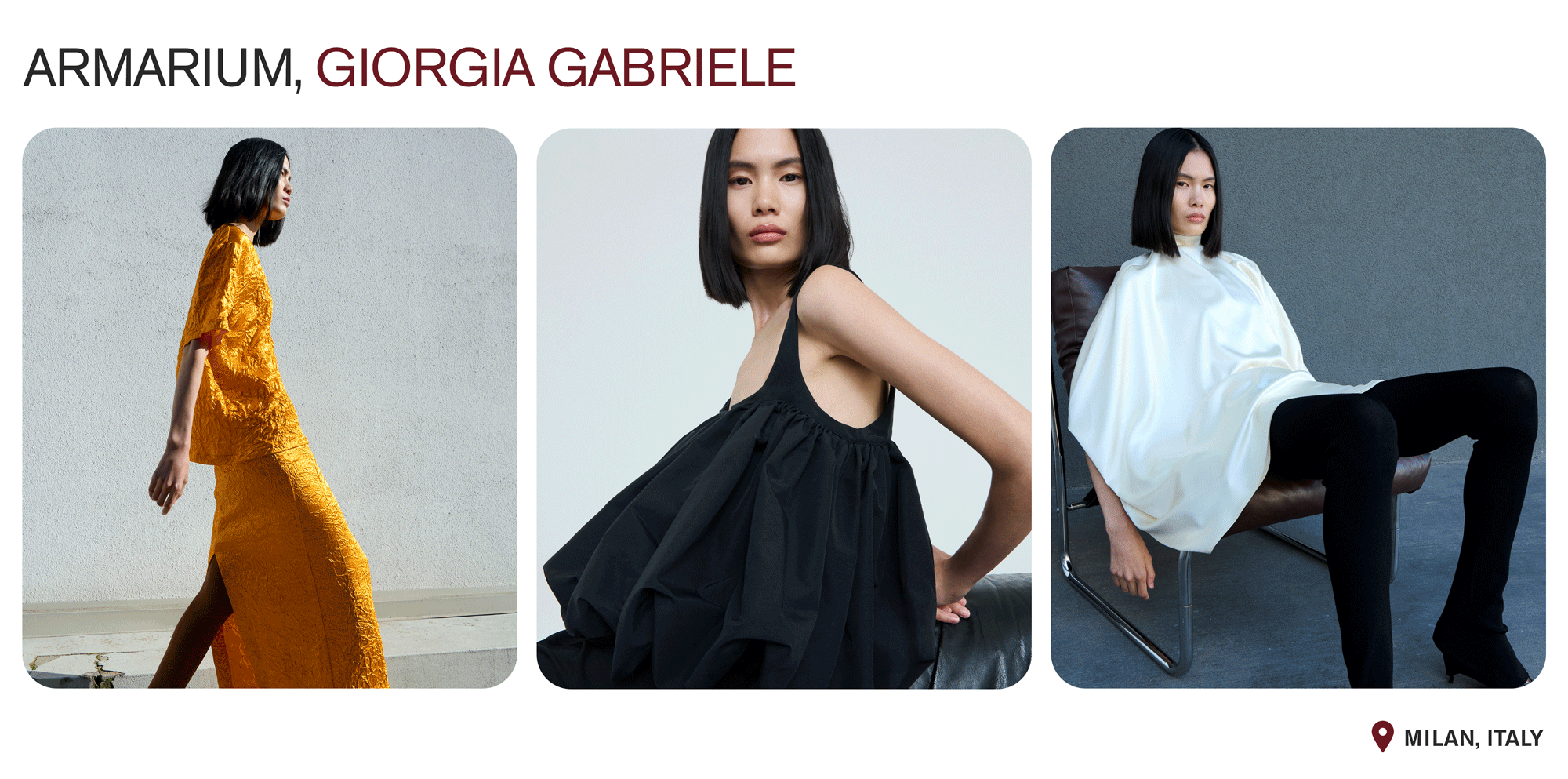
(Image credit: Armarium)
Tired of chasing seasonal trends and settling for clothes that wore out too quickly, Giorgia Gabriele set out to change things and reimagine the modern wardrobe. She envisioned a new kind of closet, one built on timeless pieces that fit beautifully, were crafted to last, and made with uncompromising quality. From there, Armarium came to fruition.
“Armarium was born in 2021 out of a personal need,” Gabriele tells Who What Wear. “I was tired of the clothes in my wardrobe that no longer reflected who I was. I no longer wanted to look for seasonal, recognizable pieces but instead [was looking] for something more lasting, pieces defined by quality and the perfect fit.”
Named after the Latin word for “wardrobe,” Armarium isn’t just about offering the basics; it’s the manifestation of the founder vision. “The idea is to fill the most intimate space of a woman—her wardrobe —with everything she needs: ready-to-wear, shoes, bags, accessories, jewelry, and more,” she says. “With each new collection, a new category is introduced, gradually building out the full Armarium universe.”
Everything is made in Italy with obsessive attention to quality, fit, and detail. “I’m not interested in design alone. That’s why I don’t see myself as a traditional designer but in everything that makes a garment real and credible,” Gabriele says. “I think of myself as a product woman. I’m obsessed with having meticulous details, design, and the perfect fit—that moment when a garment falls exactly as it should, enhancing the person wearing it. I don’t stop until everything is just right.” Today, more than ever, Gabriele thinks that kind of attention, paired with patience and persistence, is what matters the most.
How would you describe the Armarium world?
Architectures of presence. Every piece is designed not just to be worn but to inhabit, like stepping into a structure that gives form to strength, sensuality, and presence. The woman who enters this world isn’t following trends. She’s building her own atmosphere, one that is deliberate, powerful, and quietly captivating.
How does Milan inspire you and your design?
Milan inspires me deeply, but my main source of inspiration has always been architecture. I’m drawn to brutalism and the raw materiality of its elements. In Armarium, this translates into clean, sharp lines and the use of textured fabrics that bring structure and character to each piece. Architecture teaches me to build a garment as if it were a space to inhabit: Every line and every detail has both a function and a precise aesthetic.
Where do you go in your city when inspiration runs dry?
When inspiration runs dry, I seek out places where silence and structure meet. Often, I go to architectural spaces, empty courtyards, or modern buildings with clean and rigorous lines. There’s something about the way light moves through a space that helps me reset.
I also believe that inspiration returns when I stop searching for it and start observing what’s already there. When we desperately try to find new ideas, we often end up forcing them. But creativity doesn’t always come from effort. Sometimes, it appears when we pause, take a breath, and simply start looking closely at what surrounds us.
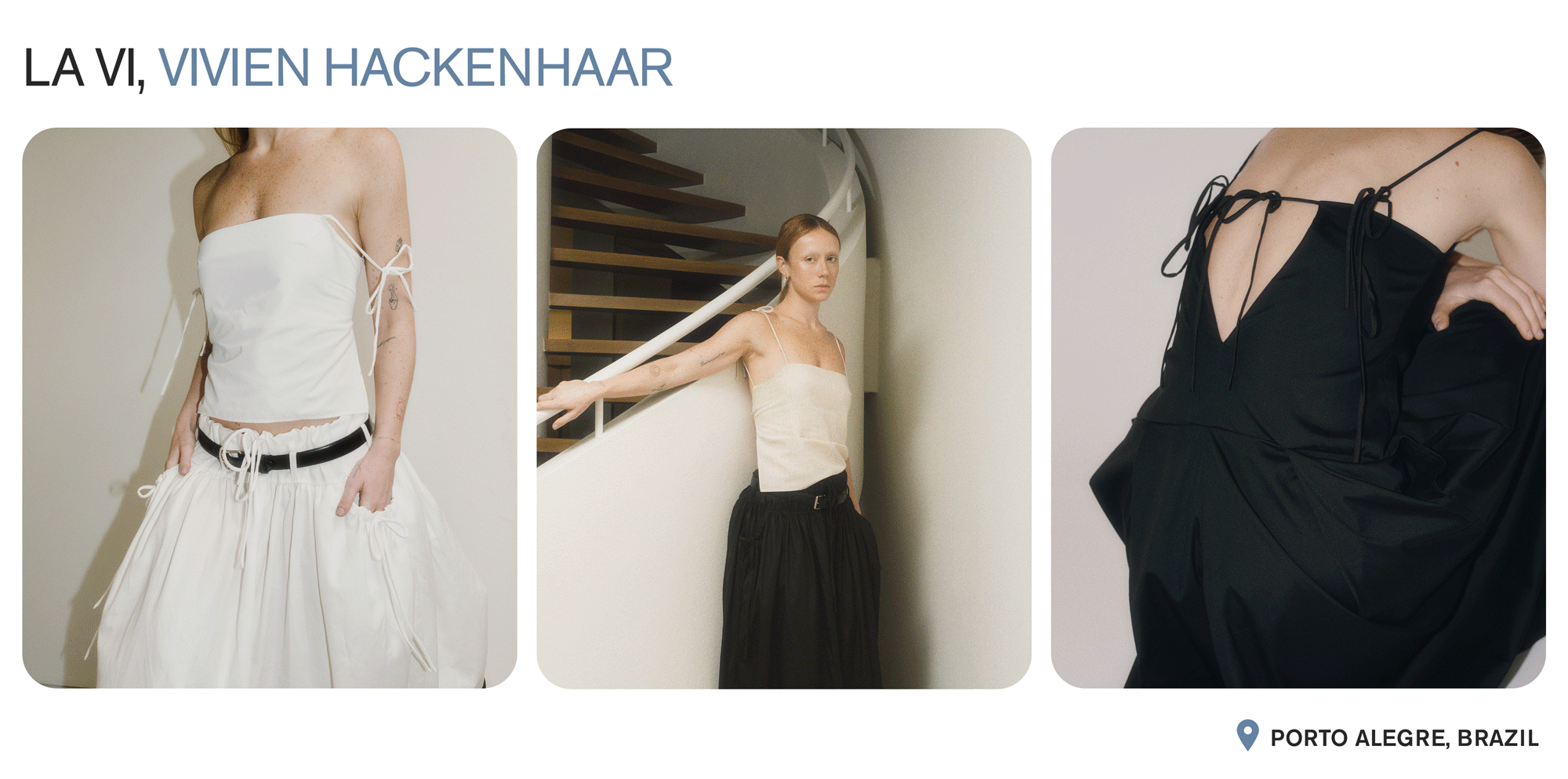
(Image credit: La Vi)
For Vivien Hackenhaar, style begins with introspection. She believes that you must fully understand yourself before you can dress the world. “A brand is an extension of who you are or a vision you carry that needs to be expressed and added to the world,” Hackenhaar tells Who What Wear. “That personal, specific point of view is what gives a brand its identity. Without it, it’s just a product.”
That philosophy became the foundation for La Vi, her Brazilian slow-fashion, ready-to-wear label. “La Vi began when I started craving a more complete creative expression—not just designing a product but shaping the full vision: the brand, the message, the experience,” Hackenhaar says. “After beginning my career in the footwear industry, shaping shoe collections from the ground up, I wanted to build something that reflected my own values and aesthetics, where design, styling, and intention could exist in full alignment.”
Over the years while working across Brazil, Asia, and the U.S., Hackenhaar absorbed more than just technical expertise in design and craftsmanship. She gained insight into global markets, structure, and the rhythm of how ideas become products. “With time, I felt the need to bring all of that into something of my own,” she says. “I wanted to build a brand that combined storytelling, sustainability, and style and create pieces that felt personal and looked effortless but were built with care and a distinct point of view.”
For Hackenhaar, the greatest opportunity in fashion lies in driving the industry toward a more conscious future, one that balances thoughtful design with a strong point of view. “I’m not reinventing the wheel; there are already incredible brands moving in that direction,” she says. “But I believe this [sustainability] is where the industry needs to evolve and where we need to focus more energy, investment, and creativity.”
How would you describe the La Vi world?
The La Vi world is about choosing beauty, consciousness, and self-expression, even when everything around us feels rushed or disconnected. It’s a mindset of presence, choosing how we move, connect, and express. There’s a quiet respect in all we do: for nature, for craftsmanship, and for the people who wear what we create. That respect shows up in our materials, in how we produce, and in small gestures, like planting a tree for every piece sold on our website to help restore and protect what fuels our life.
I see the La Vi woman as someone creating a life of her own design. She’s busy, ambitious, and grounded, building something meaningful in the world while staying conscious of how she shows up in it. She empowers herself through clarity, expressing this through the choices she makes, her style, the creations she brings into the world, and the care she brings into every space she enters. She doesn’t get dressed just to be seen; she gets dressed to feel aligned. That moment of styling, of presence, of expression, that’s where La Vi lives.
How does Brazil inspire you and your designs?
Brazil is such a rich, layered place full of warmth, energy, and life. It’s multicultural, sensorial, and deeply connected to nature. There’s a certain joy and freedom in how people express themselves there in the way they move, the way they dress, the colors, the rhythm. That spirit is something I carry with me always. There’s also a powerful femininity in Brazilian culture. Brazilian women are strong, confident, expressive, and unapologetically present. That inspires how I think about sensuality in design—not in a loud or exaggerated way but in how a piece moves on the body, how it reveals or holds back, how it makes a woman feel in her skin. That kind of expression is a big part of La Vi’s essence.
Where do you go in your city when inspiration runs dry?
When that happens, it usually means I’m not centered in myself, so I start by going inward, reconnecting with who I am [and] what I care about. From there, I turn to what feeds my essence. I’m very visual, but sound also inspires me. So I go to movies first, then music, dance, photography, and art. One of the places that always moves me is the ballet at the metropolitan. It’s like a sensorial meditation, a space where I can quiet my mind and just feel, reminding me that beauty and romance still exist, even in hard times. Those are the moments that bring me back not just creatively but to a place of centering. That’s where inspiration lives for me.
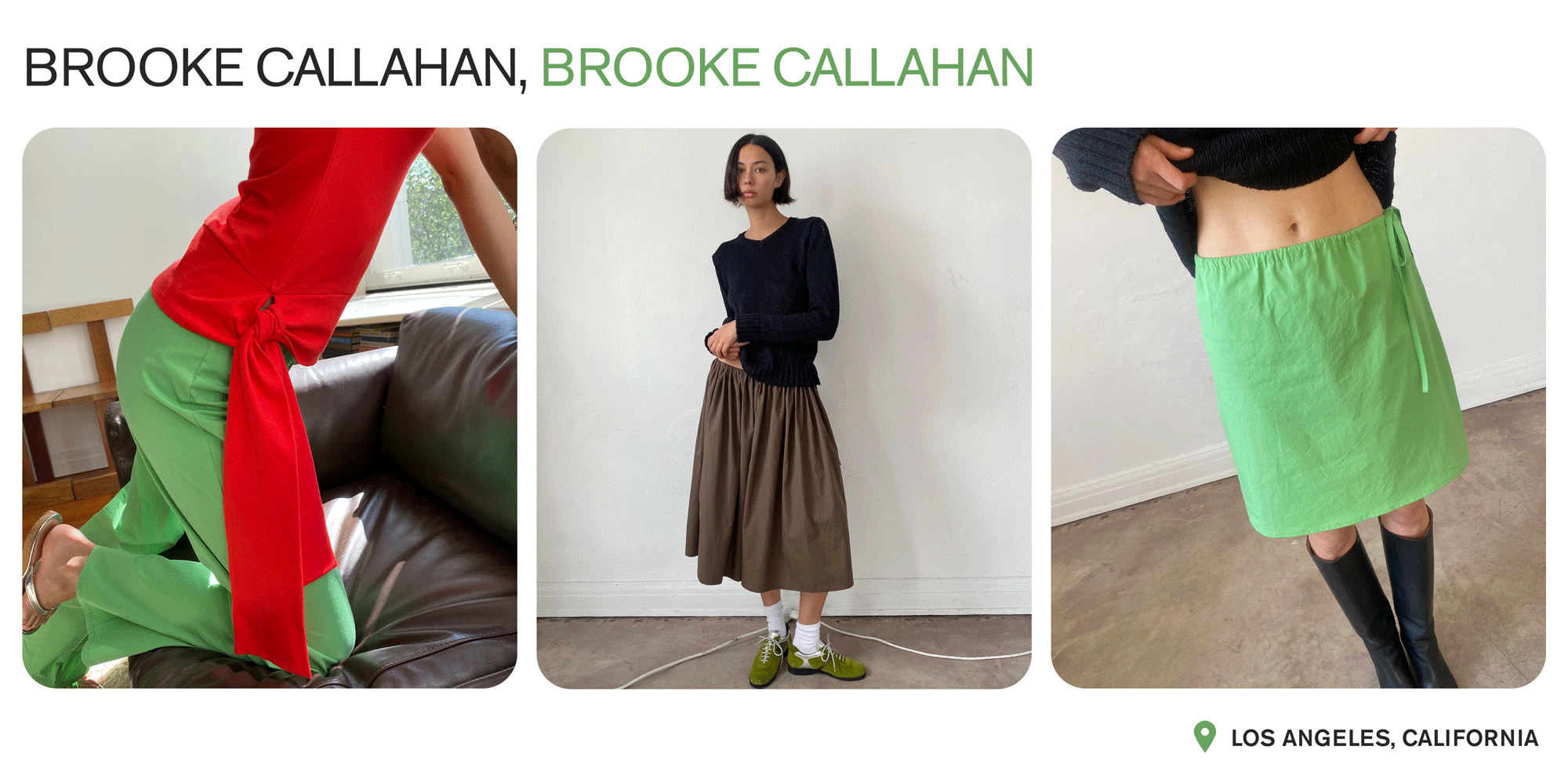
(Image credit: Brooke Callahan)
Frustrated by the pant options on the market, Los Angeles–based designer Brooke Callahan decided to take matters into her own hands. She used her background in designing jewelry (worn by Olivia Rodrigo in her “Bad Idea, Right?” music video and Sabrina Carpenter in “Espresso”) and evolved it into a clothing line, starting with the perfect pair of pants.
“It all started with pants,” Callahan tells Who What Wear. “I’d always had a horrible time shopping for super-simple pieces at a good price. It seemed like there should be an endless supply, but I had a hard time finding for myself outside of vintage and thrift stores.”
In 2021, Callahan moved from St. Louis, Missouri, to Los Angeles, California, and just two years later, she started her eponymous label. From pants, she expanded to a full collection of tops, dresses, and jackets—all made from poplin fabrics that are designed, dyed, cut, and sewn in L.A. “I wanted to work with poplin for a long time because it is super easy and comfortable but still chic,” she says.
While Callahan is particularly proud of her Cuff Top, the Tie Pants have become the brand’s signature piece. “The Tie Pants are the most popular item by far and most consumers’ first impression of the brand,” she says. “They come in three inseams, sizes S to 4X, and 11 colors.”
Callahan’s color palette is just as intentional and simple as her silhouettes. Hues like orange, navy, purple, red, turquoise, and lime green infuse each piece. While that may sound bold, they are quite muted and wearable, and the BC shopper embraces them. “The BC wearer values function, classic silhouettes, playfulness, and isn’t afraid of color,” she says. When it comes to the ease of the garments’ shapes, Callahan shares that her work’s simplicity is purposeful, leaving the designs open to interpretation.
In just over two years, Callahan’s pieces have been worn by It girls and featured in New York Magazine and T Magazine. She attributes these wins to her product-first business model. “Find a piece that is missing from your closet—something you feel like you need rather than want (much easier to sell)—and build out the collection from there,” Callahan advises. “Focusing on a core product is what shoppers will recognize you for and have them coming back.”
How would you describe the Brooke Callahan world?
It is really important to me not to narrowly define the brand or customer too much—my work’s simplicity leaves much open to interpretation on purpose. This being said, the BC wearer is drawn to uniform dressing and wears many hats—they need easy clothes that work for everything.
How does L.A. inspire you and your designs?
My poplin pieces are, to me, the quintessential L.A. wardrobe. I make what my lifestyle here calls for—easy day-to-night pieces that can be worn year-round—and everything needs to be breathable enough to wear while driving around the city with no AC.
Where do you go in your city when inspiration runs dry?
L.A. has the best flea markets—my favorite being Long Beach. When I am really in a rut, I prefer to drive slightly outside the city to places like Ojai. Ojai is full of the most beautiful colors, the best food, and is one of my favorite places to be. It sounds crazy, but packing for a trip, even just for the weekend, actually really inspires me because it makes me examine the function of pieces I choose to bring and why I think they deserve room in a small overnight bag. Utility is always on the mind.


